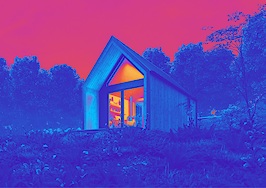No one can predict the future of real estate, but you can prepare. Find out what to prepare for and pick up the tools you’ll need at Virtual Inman Connect on Nov. 1-2, 2023. And don’t miss Inman Connect New York on Jan. 23-25, 2024, where AI, capital and more will be center stage. Bet big on the future and join us at Connect.
Given today’s economic climate, intentional consumerism is on the rise, including home purchases. According to a new report, the vast majority (93 percent) of Americans say they have become more intentional, or stayed the same, with big purchases.
Many homeowners are making what we call “simple-sizing” a reality. Two-thirds (66 percent) of people we surveyed say they have taken intentional steps toward simpler living in the past year, and 77 percent say they make intentional life choices daily. This is an attitude reflected in today’s trends: We’ve seen tiny houses become more mainstream, and two million people left America’s largest cities from 2020 to 2022 to live in the suburbs.
As people’s preferences shift, agents can help buyers realize their vision for a “simple-sized” life. The majority of people we surveyed agree a home should equal happiness, but 62 percent say their definition of a dream home has changed over the last three years. Here are three elements of simple sizing that will help agents find their clients their new “dream home.”
Intentional outweighs indulgence
Historically, a larger family’s desire for their dream home was likely the bigger the better. A social couple may have sought extra space for entertaining; a young homeowner hoped for a fixer-upper they could customize to their taste.
But the pandemic shook up many ideas about what matters most. For example, 52 percent of people we surveyed now want smaller homes, and 81 percent are seeking a simpler design, such as an open floor plan. And despite the enduring popularity of fixer-uppers, 70 percent of our respondents want a turnkey home. It’s up to agents to help buyers decide which aspects of their home life they want to maintain or change to achieve greater simplicity.
If their current home has too many bedrooms, for instance, a homeowner can downsize but not sacrifice living space: There are homes with a large living area but only one or two bedrooms. While the home isn’t smaller in square footage, it utilizes living space differently. This sort of intentionality is key to finding a home that’s simple-sized for the buyer’s priorities.
A desire for a quiet life
For many buyers, simplifying means moving away from the density of big cities. Agents can advise on a happy alternative: “Second cities” or suburbs just outside metro areas. The trend of moving to second cities began with the onset of the pandemic and continues: 67 percent of respondents say they would move to a quieter place, and 61 percent say they would move to a smaller space.
That said, the majority of people also prefer close proximity to restaurants and shopping (50 percent) and outdoor activities (51 percent), so “second cities” are a perfect match.
When considering these options, agents should remind buyers to avoid high-construction neighborhoods or newer communities in busy traffic areas. Instead, they should seek housing close to nature trails and preservation areas, or in cul-de-sacs. And homes with ample outdoor space can support quiet living, as 62 percent of Americans say they spend more time outside on their own property as a direct result of the pandemic.
Downsizing is in (not just for retirees!)
While downsizing is often associated with empty nesters, the trend has expanded to buyers in all ages and stages of life. This shift to smaller spaces is at the heart of the simple-sizing trend, with 75 percent of buyers we surveyed saying they are willing to downsize their possessions — and 79 percent say they are likely to do so in the next 12 months.
As agents research simple-sized listings, consider functional layouts with multi-purpose spaces that let buyers reduce square footage without having to give up all their favorite possessions. People can convert a home office into a guest bedroom with a Murphy or day bed, or buyers can undertake low-lift renovations to unfinished basements or use attics and staircases for storage.
If buyers are wary of committing to downsizing, storage units are a widely available and relatively inexpensive backup option.
Final thoughts
The simple-sizing trend goes far beyond real estate, but finding the right home is a top priority for buyers who seek it. When it comes to building an ideal life, our survey shows Americans value health (70 percent) and quality time (68 percent) over money (37 percent) – and after all, a home is where we make the experiences and memories, the simple pleasures, that make life worth living.
Nick Boniakowski is the Head of Agent Partnerships at Opendoor, where he oversees program strategy, growth, and sales enablement to help the agent community serve more customers and scale their businesses through collaboration with Opendoor. Connect with Nick on Linkedin.













